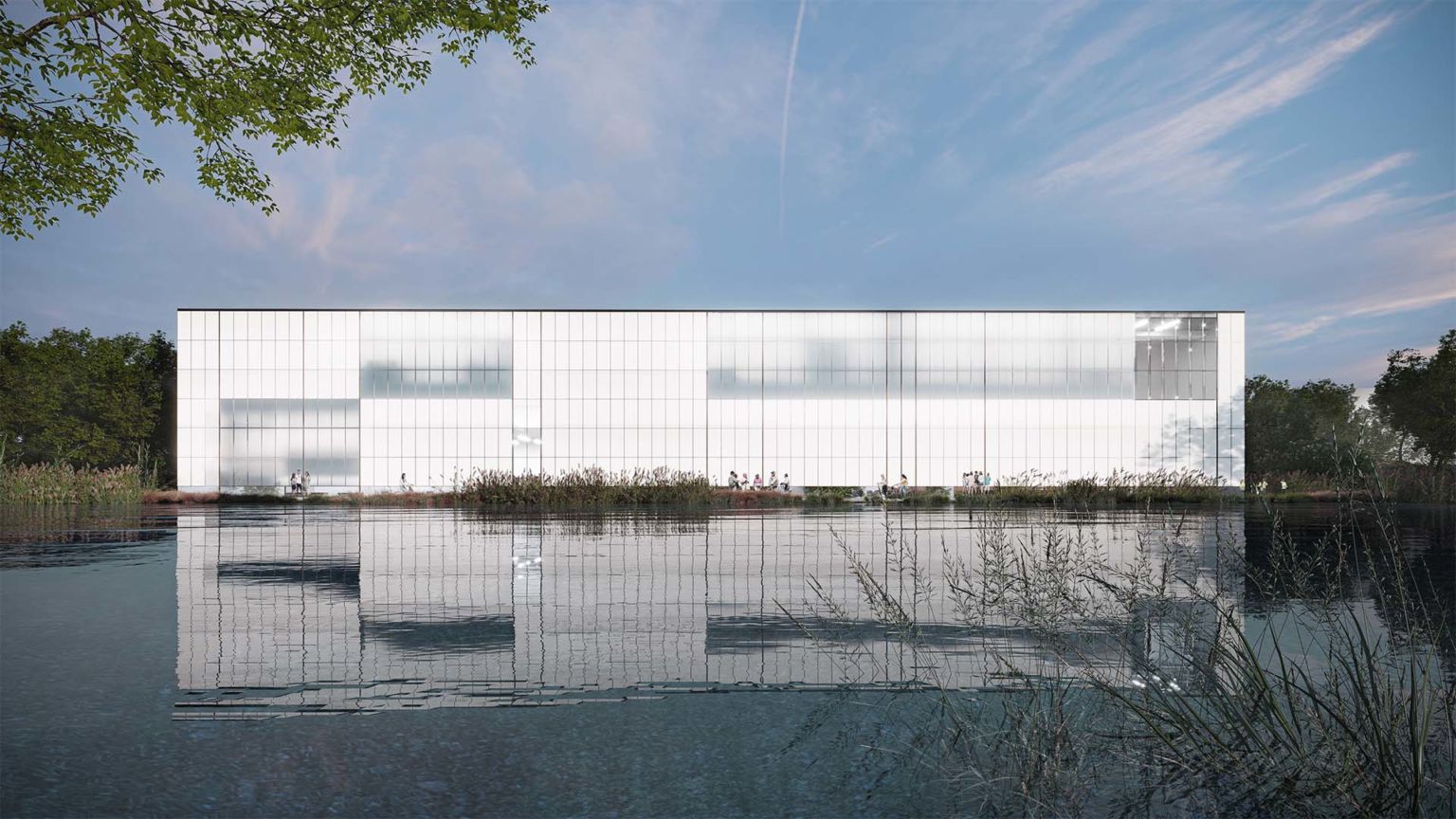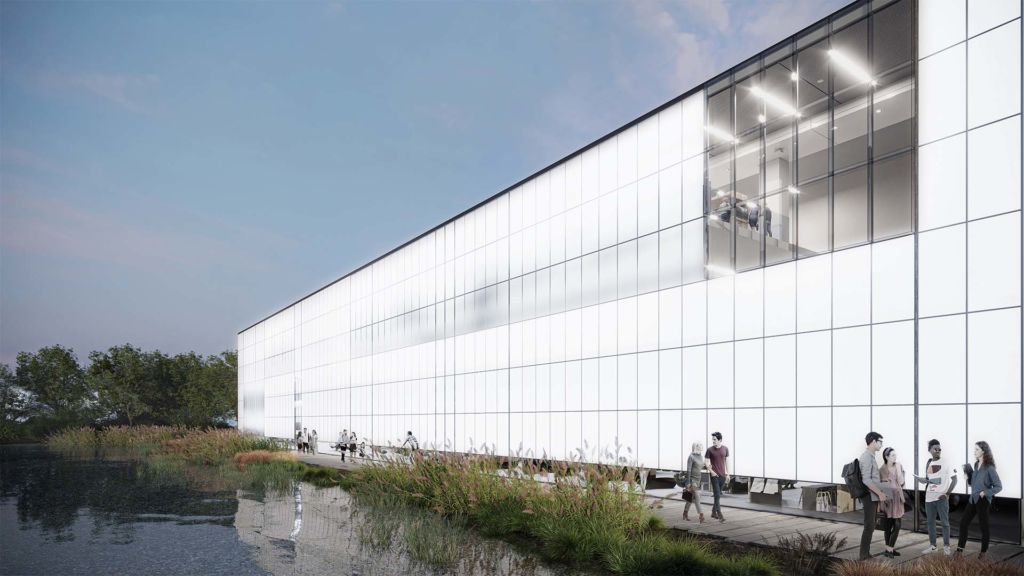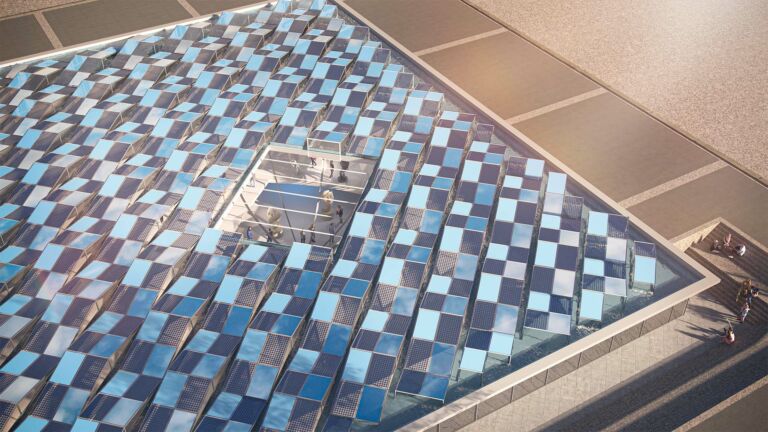
White Pearl
Active (i.e. photovoltaic) glass is often associated with dark colours. Architects and designers tend to subconsciously think that incorporating active glazing will negatively impact their designs by limiting the colour palette to dark bluish-black hues. While that was true a long time ago, today’s active facades are no different from their standard counterparts in that they are both open to the exact same chromatic possibilities.

AGC’s White Pearl BIPV unit ؘ– used in the pictured project, situated next to the water in pleasant natural surroundings – comes in a simple and conventional shape. In this project, the colour white was emphasised by combining white SunEwat Colour glass with acid-etched translucent IGUs and transparent IGUs. In fact, the bright white colour was deliberately showcased in direct opposition to the dark colours usually associated with photovoltaic glass. Combining three products ranging from plain to translucent – namely, the mirror effect of plain white Lacobel, the shadow and transparency of acid-etched glass and white IGUs in the interior – created a unique depth to the facade. At night, the effect is reversed through the use of backlighting.
In taking this approach resolutely focused on brightness and lightness, our aim was to eliminate the underlying association between active glass and dark colours. Active glass can be used anywhere in any size and any colour. It can be gracefully incorporated into future projects, with no need for limited or drastic colour choices. Indeed, any and all colours can soak up the sun – albeit some more efficiently and more elegantly than others. Everything else boils down to architectural sensitivity and creativity.

